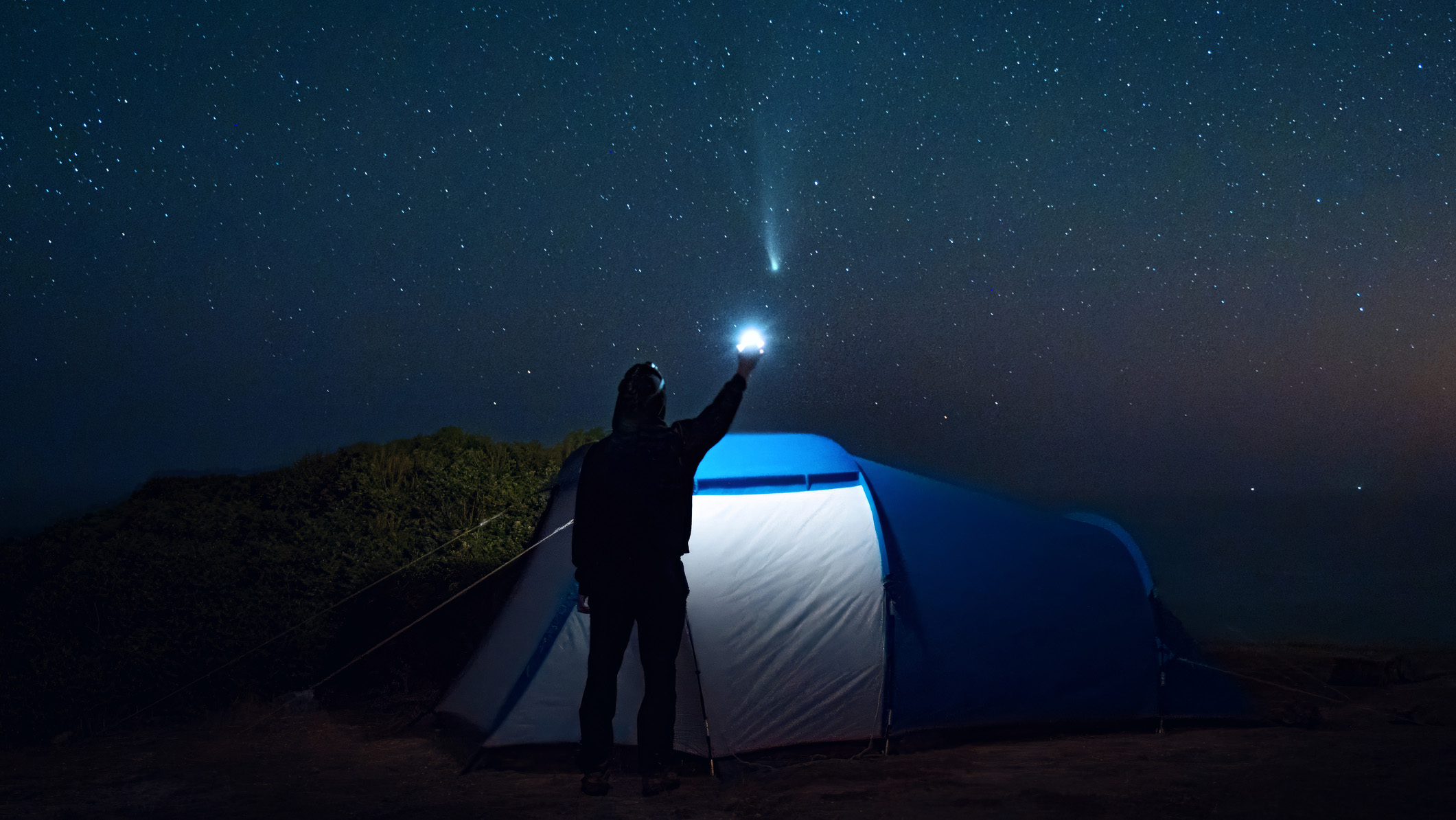
Comet Tsuchinshan-ATLAS has been delighting astronomers, stargazers and astrophotographers in the northern hemisphere this month (it was previously only visible in the southern hemisphere). As such, news outlets and social media have been awash with incredible photographs of the celestial event, captured with some of the best cameras for astrophotography and even smartphones.
However, time is running out if you want to capture your own photograph of the comet that BBC Sky at Night Magazine called: "brighter and more beautiful than Comet NEOWISE" – which Digital Camera World reported on way back in 2021. And that's because Tsuchinshan-ATLAS won't reappear for another 80,000 years. I wonder what kind of cameras Nikon, Canon and Sony will be churning out then?!
When can you see the comet Tsuchinshan-ATLAS?
The comet is arguably the highlight of astrophotography events in October. A report from Space.com explained it would be at its brightest on October 12, when it passes nearest to Earth, and should look its best up until October 26, stating: "By then, the comet will be the largest visible object in the solar system and the closest to the Earth beyond the moon."
If you're hoping to photograph the celestial object with your camera or – as some have – the best camera phone, you'll increase your chances of capturing a 'keeper' if you visit an International Dark Sky Place, so the comet's visibility isn't impacted by light pollution.
On October 12, Space.com reported that the comet was visible roughly 45 minutes after sunset, six degrees above the horizon in the south-west. It added: "during the week, the comet's altitude above the horizon will increase by about 3 degrees per night; each evening, it will be setting about 16 minutes later."
Judging by that, tonight, you can expect the comet to appear roughly 1 hour and 49 minutes after sunset, at 18 degrees above the horizon.
How to photograph a comet
The best tripod is an absolute necessity when capturing astrophotography. The trick to capturing a comet is allowing as much light into the camera as possible, without selecting an exposure that's so long, it'll cause the comet to trail. Begin by setting your lens's aperture wide open. Ideally, you'll want to shoot with an f/2.8 optic or faster.
You'll want to use the lowest ISO possible to retain maximum image quality. This means working out the optimum shutter speed before the comet trails. Five- to 10-second exposures are most common, but you'll have to experiment to find what you can get away with. Don't be alarmed if your ISO creeps up. Modern cameras are boasting better and better quality at high ISOs, while many of the best photo editing software's noise reduction capabilities have redefined low-light shooting. It's always best to select a higher ISO with slightly more noise than end up with a blurry image.
I'd also recommend using a remote shutter release so that physically pressing the shutter button doesn't cause camera shake. If you don't have a remote shutter release, you can set a self-timer, or better yet, use exposure delay mode (aka the selftimer mode), if your camera has it.
When it comes to composition, you might be tempted to crack out an ultra-wide-angle lens, a mainstay for most astrophotographers. But because the comet will be very small in the sky, you're better off opting for a telephoto lens so the celestial object isn't diminished due to barrel distortion. An 85mm f/1.8 or a 70-200mm f/2.8 will provide decent reach and a fast aperture, but if you're lucky enough to have a 300mm f/2.8, this would work very well, too.
Even so, the comet will still be comparatively very small compared to the rest of the frame, so you'll want to frame foreground interest to spice up your composition. A mountain or old structure would be perfect. Especially if you can frame the comet directly above it, like Instagrammer @herry.with.an.e managed, with the excellent example above.
If you're interested in astrophotography, you might be interested in the best star tracker camera mounts for astrophotography or the best telescopes for astrophotography.







